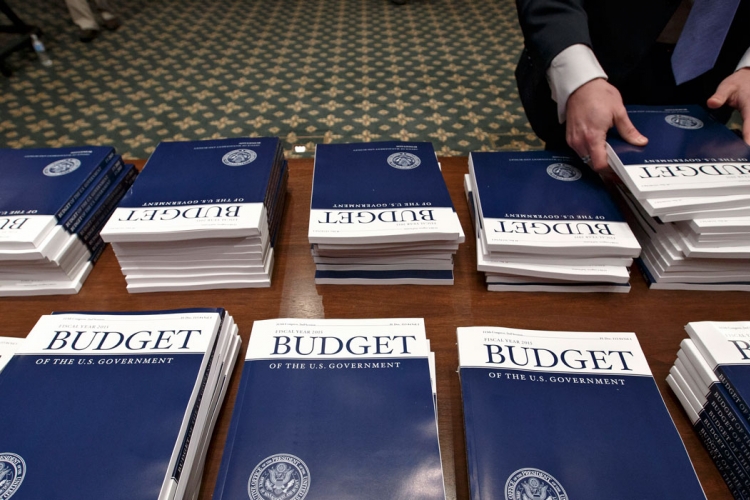The Information Technology and Innovation Foundation recently released an analysis of the presidential candidates' positions regarding technology and innovation to see how they might approach these issues as president.
“Ensuring that the United States is doing all it can to advance innovation will continue to be central in addressing key policy challenges,” ITIF wrote in the paper.
As technology touches more areas of our lives, leaders need to address the challenges related to security, economic growth and continued innovation.
“Some of these policies should involve public-private partnerships, which Democratic presidential nominee Hillary Clinton has supported. Others should involve corporate tax and regulatory reform, including ensuring the United States has a more globally competitive tax code, as Republican Donald Trump has advocated,” ITIF wrote.
ITIF used information found on the candidates' websites, policy documents and comments made at public events to identify positions on technological innovation.
Although this year's election has generated more interest than usual in third-party candidates, the paper focused only on the two major-party candidates, noting that, as of the September report's writing, Libertarian Gary Johnson and Green Party nominee Jill Stein were polling well below the minimum required to participate in the presidential debate.
ITIF is a nonpartisan organization and does not favor one candidate over another. However, despite ITIF's neutral position, the report comes across as more favorable to Clinton because she has made more comments on the issues the organization covers.
ITIF expressed some doubts over Trump's position, noting in the report that he has largely been silent when it comes to technology and innovation policy. And when he has spoken about the tech industry, his comments have sometimes been critical.
“We believe it is important to clearly document what the two candidates have said (or not said) about these critical innovation issues, as their positions serve as the best available guide to the next administration's policy priorities — and the lack of a stated position may indicate which issues would be low priorities,” ITIF wrote in the report.
Looking at the candidates' general positions on innovation and technology, the report found Clinton has indicated she would try to engage the government and private companies as partners; would focus on achieving social and economic goals through technology innovation; is supportive of “smarter regulation” of the technology industry; and supports immigration for highly skilled workers and STEM students.
However, the report found Clinton has opposed efforts to make U.S. companies more competitive in the global market.
ITIF found the policy positions listed on Trump's campaign website didn't address technology innovation specifically. He has called for a significant reduction of business taxes and regulations, including corporate taxes, the report found.
ITIF noted that Trump's position on immigration for highly skilled workers is unclear, and that his support for strong homeland security could weaken data encryption standards.
 Internet and Digital Economy
Internet and Digital Economy
ITIF wrote that the digital economy is a key driver of U.S. competitiveness and economic growth, and supports government policies that foster the adoption and use of information technology.
“In general, policymakers should use a light touch to regulate legitimate use of digital technology, and take a hard line on regulating illegitimate digital activity, such as cybercrime and online piracy,” ITIF wrote in the report.
Clinton has said she would expand cybersecurity investment and encourage collaboration between the public and private sectors, and would expand on the Cybersecurity National Action Plan announced by President Barack Obama in February.
On Sept. 8, the White House announced that, as part of the CNAP, it had appointed retired Brigadier General Gregory Touhill as the first federal chief information security officer.
The paper noted Trump has said the United States' cybersecurity policies are obsolete and called for stronger protections against hackers.
Regarding encryption, Clinton has said she supports studying how to balance giving law enforcement access to encrypted communications and Americans' right to privacy, according to the paper. ITIF didn't find any statements from Trump regarding encryption in general, but it pointed to his criticism of Apple for denying the FBI's request for access to an iPhone owned by Syed Farook, one of the suspects involved in the San Bernardino shooting last year.
 Innovation and R&D
Innovation and R&D
The federal government would have to spend an additional $65 billion a year to reach the average ratio of R&D funding to GDP seen in the 1980s, the report found. Research funding, patent reform and technology transfer policies are important to support innovation, but ITIF found U.S. policies ranked 10th for contributing to global innovation, and the country's R&D tax incentive is the world's 27th most generous.
Clinton supports increasing the federal budget for R&D, especially for high-performance computing, green energy and machine learning, and has proposed to increase research budgets for the National Science Foundation, the Department of Energy and the Defense Advanced Research Projects Agency, according to the report.
Trump has indicated a desire to direct funding to current challenges like infrastructure, rather than future-oriented scientific research or missions, the paper noted.
 Taxes and Budget
Taxes and Budget
ITIF supports tax incentives that make American businesses more competitive internationally, by increasing investments in R&D, new capital equipment and more qualified workers.
“Unfortunately, America now has the highest combined federal-state statutory corporate tax rate among OECD countries, at 39.2%. It is the only OECD country in which the statutory corporate tax rate did not decline between 2000 and 2012,” according to the report.
Consequently, the candidates' tax policies could have a significant impact on innovation and technology.
Trump has said he would reduce the corporate tax rate to 15%, end deferral of taxes on foreign earnings, phase in a cap on interest deductibility and repeal the corporate alternative minimum tax, according to the report.
Clinton has said she would maintain the 35% corporate tax rate, introduce an exit tax for companies moving their business to other countries, create a two-year tax credit for employers that share profits with workers, and create a $1,500 credit for each new worker trained and hired by businesses, ITIF found.
Clinton has not offered a position on repatriation or taxes on foreign earnings. Trump would tax past foreign profits held in cash at 10%, and lower the tax rate on foreign earnings to 15%, as well as eliminate the deferral.
Regarding the R&D tax credit, ITIF found Clinton would remove tax credits for companies that send jobs overseas. Trump's campaign website notes he would eliminate most corporate tax expenditures except the R&D credit.
Under Trump's plan, capital gains and dividends would be taxed at a maximum rate of 20%, while Clinton would tax capital gains as ordinary income if held for less than two years. Assets held for between two and six years would be taxed at a lower rate; those held for six years or more would be taxed at 23.8%, according to the paper.
The Clinton plan also allows a 0% capital gains rate on long-term investments in qualified small business stock held for at least five years.
© Touchpoint Markets, All Rights Reserved. Request academic re-use from www.copyright.com. All other uses, submit a request to [email protected]. For more inforrmation visit Asset & Logo Licensing.






